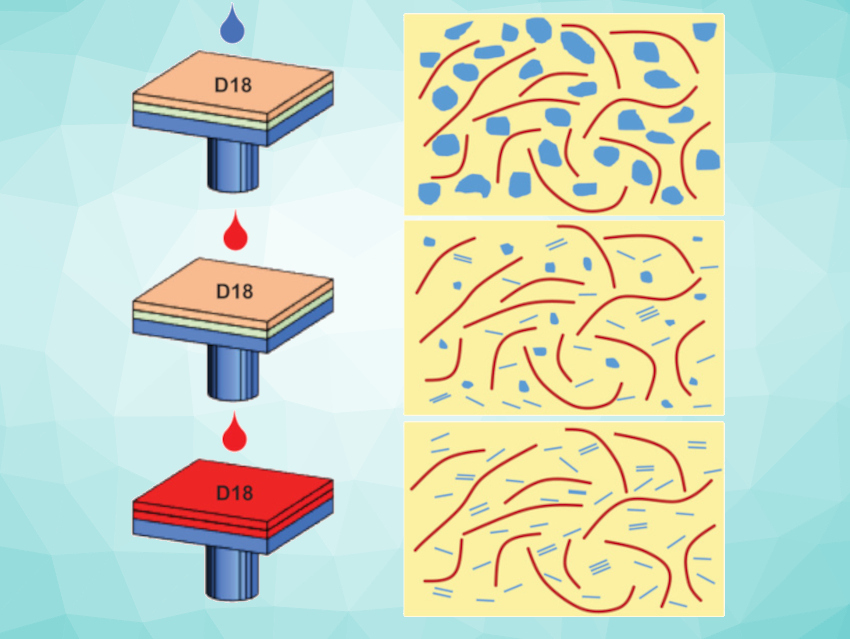Organic solar cells (OSCs) have received considerable research attention because of their mechanical flexibility, low weight, and the possibility to tune their optoelectronic properties. The molecular ordering and aggregation of donors (D) and acceptors (A) within the photoactive layer are critical. A bulk heterojunction (BHJ) structure composed of electron donors and acceptors in the photoactive layer provides sufficient D/A interfaces for charge separation, but also induces considerable charge recombination, which limits device efficiency. Pseudo-bulk heterojunction (pseudo-BHJ) structures, created by the sequential casting of donors and acceptors have been found to achieve improved efficiencies.
D18 is a donor material that shows high hole mobility due to the formation of nano-fibrils. BTP-eC7 is a nonfullerene acceptor. D18 and BTP-eC7 (pictured below) are promising candidate materials for high-performance OSCs. However, BTP-eC7 forms large aggregates when cast at room temperature (RT). RT-processed pseudo-BHJ D18/BTP-eC7 provides a low efficiency of only 8 %, a value that is far below the ca. 14 % efficiency of BHJ-type D18:BTP-eC7 devices.
Jianhui Hou, Institute of Chemistry, Chinese Academy of Sciences, Beijing, and University of the Chinese Academy of Sciences, Beijing, Tao Wang, Wuhan University of Technology, China, and colleagues have applied a heating-induced aggregation control strategy to the preparation of pseudo-BHJ devices during sequential casting. This allowed them to fine-tune the aggregation of BTP-eC7.
By casting a hot BTP-eC7 solution onto a D18 fibrillar network, the undesirable large particles and excessive aggregation of BTP-eC7 (pictured above in the top row) can be reduced (pictured above in the center row). Aggregation can be even further reduced by casting a hot BTP-eC7 hot onto a D18 fibrillar layer preheated on a hot substrate (pictured above in the bottom row).
.jpg)
This heating control during film-casting leads to an appropriate aggregation of BTP-eC7 in the photoactive layer, which contributes to efficient charge transport and provides a maximum PCE of 15.9%.
- Heating‐induced aggregation control for efficient sequential‐cast organic solar cells,
Donghui Li, Chuanhang Guo, Xue Zhang, Baocai Du, Pang Wang, Shili Cheng, Jinlong Cai, Hui Wang, Dan Liu, Huifeng Yao, Jianhui Hou, Tao Wang,
Aggregate 2021.
https://doi.org/10.1002/agt2.104


